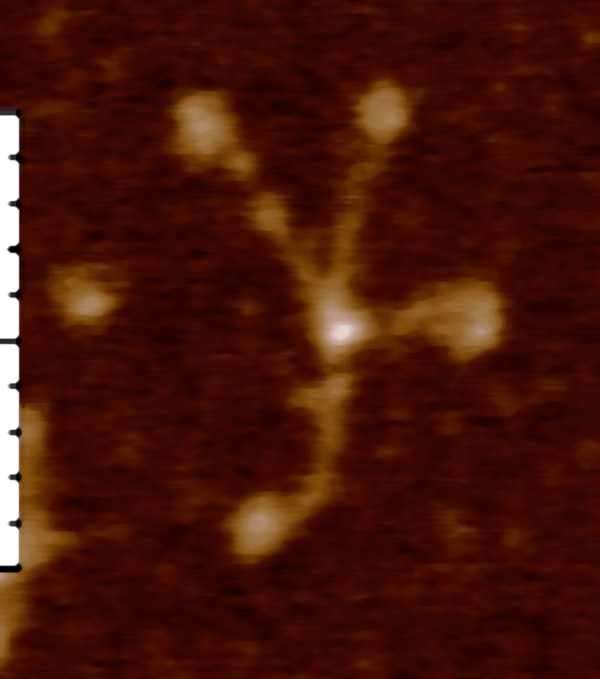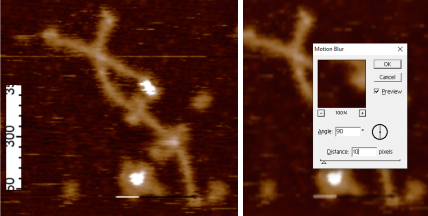Here is an image of SP-D (kindly provided by two labs) which I have processed in gwyddion using the integral transform>rank filter option in two ways. My main objective was to see whether the peaks of the original AFM image (left) could be smoothed and or enhanced. This has been a goal on hundreds of images (both SP-D and DMBT1) and I am really convinced that even the wildest processing does very little to change the data. See the settings in the inset boxes. Notice that the CRD and the N termini of this dodecamer still remain even in the extreme processing, in addition one putative glycosylation site (lower center left, and two other peaks (upper left before the CRD) while less prominent, still remain. Note, my favorite processing to date does not come from imageJ or gwddion but from photoshop. Ha ha…. who would guess that a simple “20px dust and scratches” filter would produce a quick and usable image (see bottom image).


Another dodecamer (actually two) to which has been applied the photoshop motion blur at 90o to reduce the horizontal chatter in the original AFM (left) is easy and makes for a much more pleasing image without sacrificing detail (compare with image on the right).
